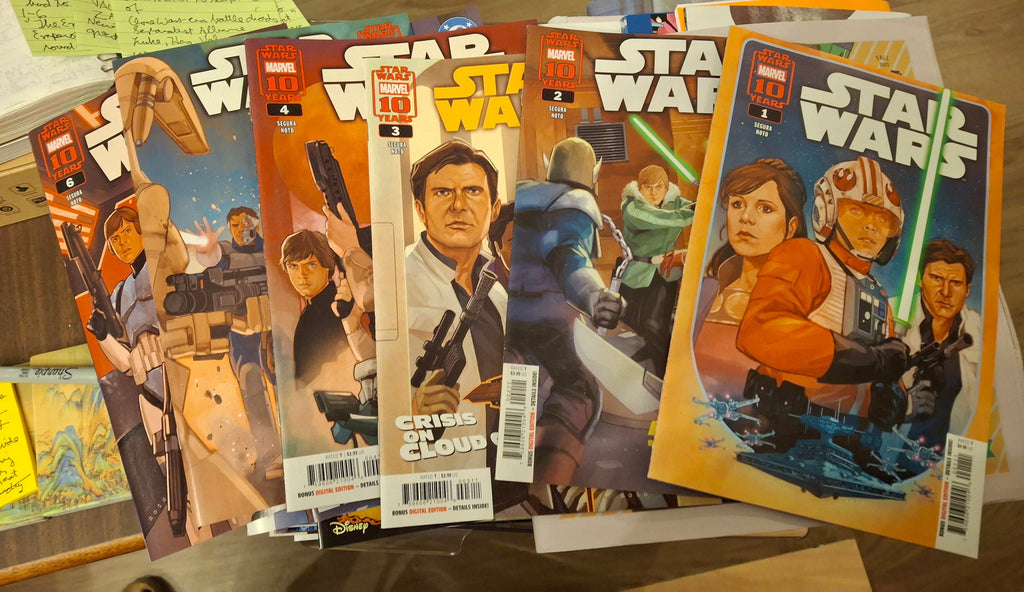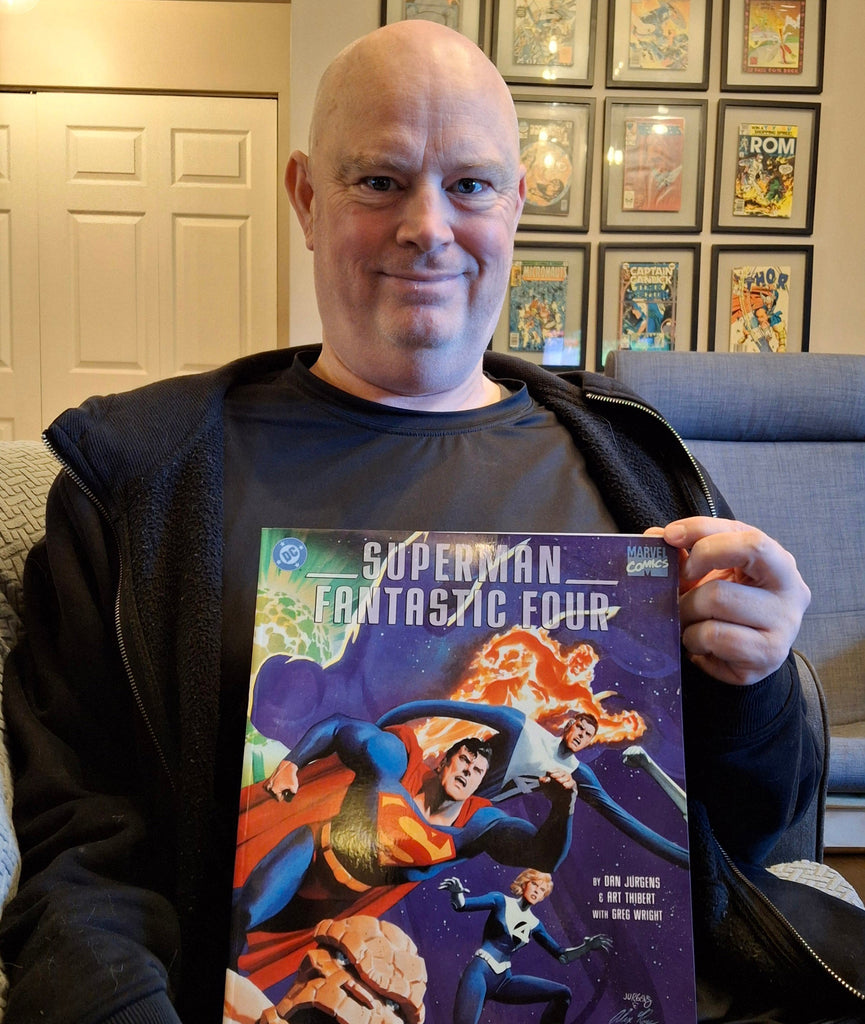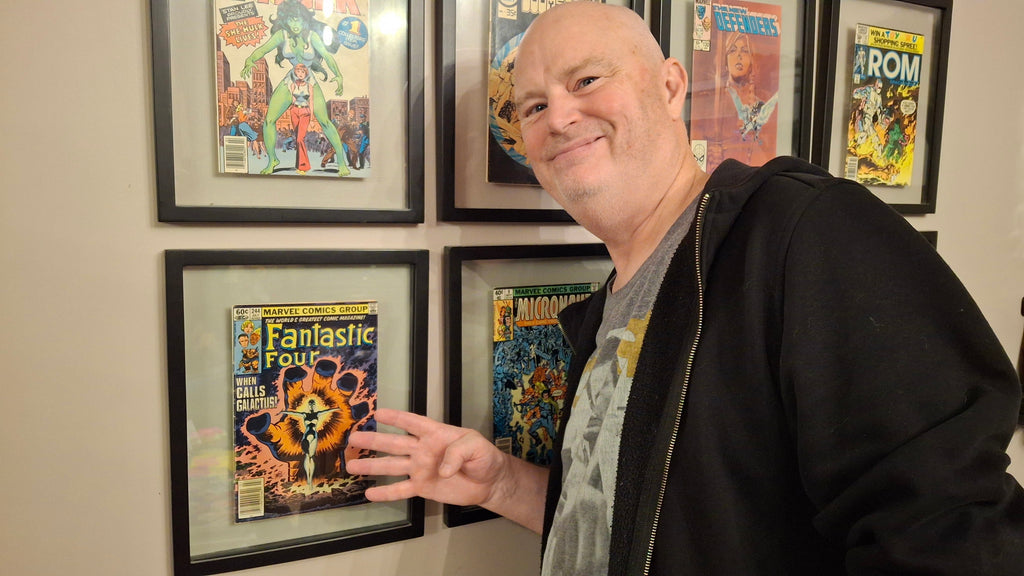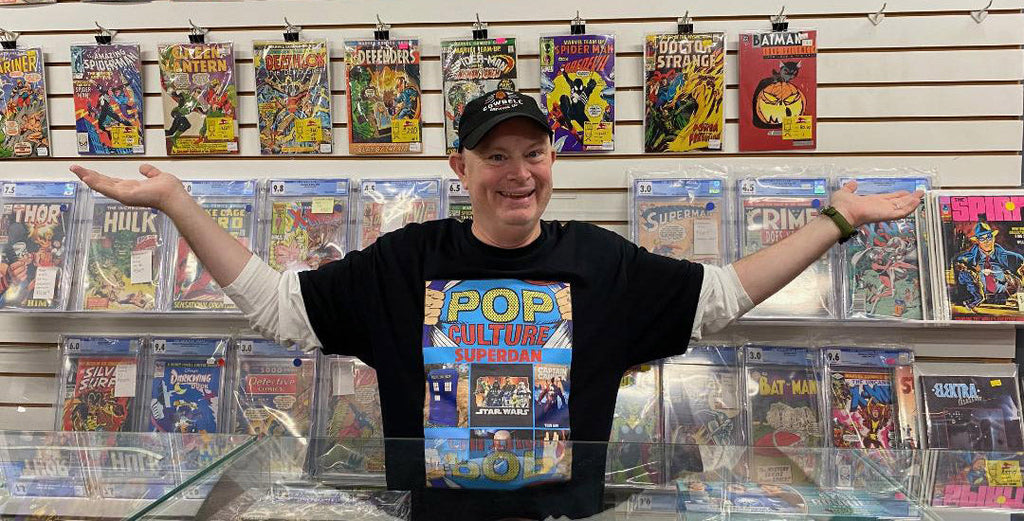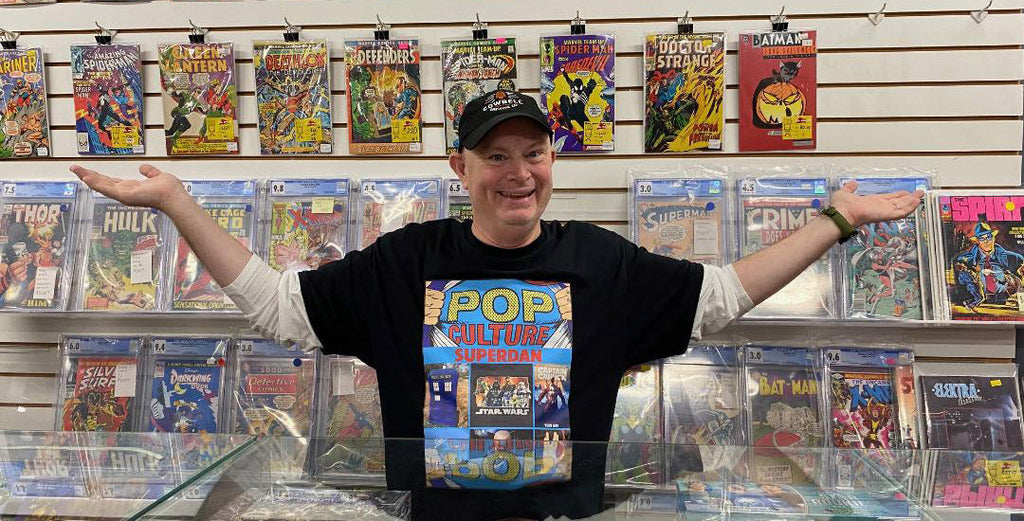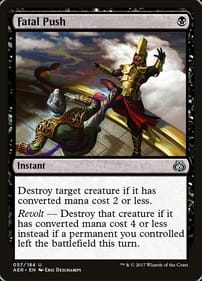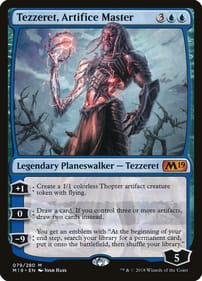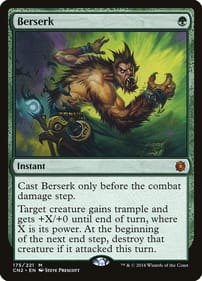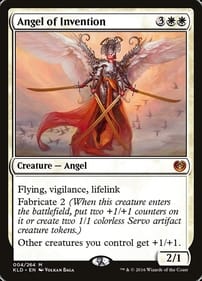Merc With A Mouth Crashes Into Dark Knight’s World
By Dan Brown There’s nothing unusual about someone hiring Deadpool to carry out a contract killing. But when his latest job takes him to Gotham City, that’s when comic fans know this is no ordinary assignment. Deadpool/Batman is the latest comic-industry crossover. It shows what happens when the Merc With a Mouth (a Marvel character) crashes into the world of Batman (a DC creation). Both companies are probably hoping that by joining forces they can introduce a new generation of comic readers to the concept of industry crossovers, thus cross-pollinating different fandoms. There’s a long tradition of superhero crossovers going back to at least 1976, when Superman fought Spider-Man for the first time. Since then, they’ve become a comic fixture. (And a cultural fixture – just check out the movies like Alien vs. Predator or Freddie vs. Jason.) The story, illustrated by Greg Capullo and written by Zeb Wells, begins when Deadpool leaps through the very manor window where a bat once appeared, inspiring a young Bruce Wayne to avenge his parents by donning a batsuit. Unaware of Wayne’s secret identity, the fast-talking Deadpool explains to Wayne he has been hired to off the Dark Knight: “Some guy who dresses like a bat? Which I’m assured is grim and creepy even though that’s clearly hilarious?” (When the mutant assassin eventually comes face-to-face with the Caped Crusader, he admits he was mistaken. “Batman! You’re . .. terrifying. I hate myself for saying this, but the bat thing? It works.”) Fans of Deadpool will be happy seeing him wield a katana in each hand, and Batman devotees will be satisfied to see him brooding. It’s quite a clash of tones. In fact, those fans might find themselves questioning the book’s premise: These two don’t seem to have a lot in common, at least on the surface. Why have them become partners? Doesn’t the crazed Deadpool have more in common with someone else in the Batman pantheon . . . his nemesis, the insane Joker? Yup. Without giving too much away, the Clown Prince of Crime does make an appearance, with Deadpool labeling him a villain whose “brain is a neurospicy dopamine goblin with task paralysis and a lack of object permanence.” In other words, Deadpool and the Joker are perfect for each other. There are also backup features in this book that pair more DC heroes with Marvel protagonists. Wonder Woman teams up with Captain America, Green Arrow with Daredevil, Frank Miller’s Batman with Old Man Logan, and so on. The funniest moment among these pairings comes when Rocket Raccoon tries on Green Lantern’s ring: “Brightest day, blackest night, yada yada. Green flame on!” the genetically engineered woodland mammal cries. Considering the main story is only 25 pages long, what I would have liked to have seen is for the publishers to devote those extra 16 pages to fully fleshing out the title team-up. (There is also another crossover published at the same time as Deadpool/Batman called Batman/Deadpool, which I haven’t read yet.) With more pages, they could have expanded what is essentially an appetizer into a full-fledged meal. Also, unlike the crossovers of my childhood, the current ones are published in a regular-size comic format, so they don’t feel as special as the jumbo ones of old. Dan Brown has covered pop culture for more than 33 years as a journalist and also moderates L.A. Mood’s monthly graphic-novel group.
New Star Wars Series Aimed at Fans
By Dan Brown Dedicated fans will get the most of out Marvel’s ongoing Star Wars title featuring Luke Skywalker, Han Solo, and Princess Leia. I would say I’m a fan of Star Wars, the Empire Strikes Back, and the first third of Return of the Jedi, so I enjoyed it just fine. This series – I looked at the first six issues – takes place in the timeline after the end of Return of the Jedi, with the Empire in tatters and our plucky bunch of heroes attempting to bolster the fledgling New Republic. There are all the usual trappings: blasters firing, lightsabres slicing, spaceships exploding, treaties being negotiated. (No one gets choked, though, which happens a lot in those original movies.) What will jump out at fans is how characters show up who have never been featured in a Star Wars movie. So the story – which revolves around Princess Leia wooing a system of planets to join her incipient interstellar government – has Solo teaming up with Valance, a bounty hunter who made his debut in Star Wars comics way back in 1978. Shades of Darth Vader, he was a self-loathing cyborg. Here, after he and Solo escape from a tight spot, the pair of rogues enjoy drinks at an alien-infested tavern. This is when Valance gives the Corellian a hard time for becoming part of the rebel establishment. “Things are different now, Valance. I can’t just hop in the (Millennium) Falcon and fly off on an adventure whenever I like,” the one-time smuggler and now married man explains. “The old days are gone.” What will also stand out for longtime fans is how the characters actually resemble the actors who portrayed them in the original trilogy — so Solo looks like Harrison Ford, Skywalker like Mark Hamill, and so on. Back in the day, the licence Marvel had with Lucasfilm stipulated that they couldn’t do this, in case George Lucas ever needed to re-cast any of the roles. What fans of those original comics got were bland, anonymous characters who had roughly the same hairstyle as the ensemble that made the movies such a sensation. It’s unclear how much of the interregnum between Return of the Jedi and The Force Awakens will be covered in the new series. And that’s part of the problem: Because there is so much plot infrastructure already in place, there’s only so many directions writer Alex Segura and artist Phil Noto can go. The result: The creative team is constrained in bringing real change to the existing universe (these comics are billed as canon, though). They can’t kill off a main character, for instance. Still, Luke does get to Force-shove some baddies out his way and fire up his laser sword. Solo does get to shoot his way back to his hunk of junk spaceship through a crowd of villains. And Leia does get hot-headed during some palace intrigue. If that sounds like fun, this is the series for you. By the way, I’m also a fan of the Last Jedi, the Mandalorian, Rogue One, Andor, and the standalone Solo movie. Now there’s an idea – since Solo: A Star Wars Story is unlikely to ever get a sequel on the big screen, why not have a comic series that details what happens to Han and Chewie in the decade before they meet Luke and Ben Kenobi on Tatooine? That would be something I could really get behind! Dan Brown has covered pop culture for more than 33 years as a journalist and also moderates L.A. Mood’s monthly graphic-novel group.
Will New Crossovers Keep It Fresh?
By Dan Brown Incoming! A new batch of DC/Marvel collaborations begins landing in comic stores this month. As old comic fans like me well know, crossovers are an age-old marketing tradition. The question is: Can the combined talent of comicdom’s two industry leaders make them feel fresh and exciting in 2025? The collabs, one published by each company, were announced in February. L.A. Mood’s Matt Finch alerted me they were in the pipeline because he knew I would remember the ones from the 1970s and onward. Those stories take place out of regular continuity. That allows the legal wall between DC and Marvel to be torn down, the result being Superman can team up with Spider-Man, the New Teen Titans with the X-Men, Batman with the Hulk, and so on. Crossovers were once rare, momentous events. When I cast my mind back to the 1970s, I still remember being stunned at the sight of the Man of Steel and Spidey squaring off on the cover of the same comic. Although I was just a dumb kid, I understood this was something special that didn’t happen every month. That’s probably why I grabbed every crossover – typically printed in a larger format – that came my way. Since these special issues sold so well, they quickly evolved into a cottage industry within the larger comics business, and as more independent publishers popped up, those new players tried to grab a piece of the action. Batman has co-starred with Judge Dredd. Archie met the Predator once. The Teenage Mutant Ninja Turtles have taken on Flaming Carrot. Flash-forward to this year, and Godzilla seems to be omnipresent in comics, breathing fire and stomping skyscrapers in every publisher’s imaginative universe. Crossovers represent an extension of the idea of continuity: If every Marvel superhero exists in the same metaverse together, why can’t they exist alongside DC’s stable of stars as well, at least temporarily? The first of the new books will see Deadpool face off against the Dark Knight, with backup stories combining Daredevil and Wonder Woman, and Krypto and Jeff the Land Shark, in the same volume. Along those lines, this summer I found an old Wizard magazine from 1994 in a second-hand bookstore. Among the then-current industry news was a brief touting an upcoming Batman/Punisher outing. That’s how ubiquitous they became. It was from those earlier crossovers that I was first introduced to such characters as the Jack Kirby-created baddie Darkseid. (Lord knows I love Walter Simonson’s art, but how did George Perez not get the assignment when the Titans met the X-Men in 1982?) So that particular volume was instrumental in introducing each company’s fans to the other’s lineup of characters. Crossovers became a way of cross-pollinating different fandoms. Those who loved both of this summer’s big-screen superhero outings – Superman and The Fantastic Four: First Steps – may be surprised to learn that Supes was, like the Silver Surfer, once a herald of Marvel planet-eater Galactus. Yep, it happened in 1999’s Superman/Fantastic Four: The Infinite Destruction, one of the best dual efforts from back in the day. Speaking of the movies, if it’s really true that audiences are finally tiring of superhero stories, how long will it be before one of the big brains in Hollywood suggests using the same strategy on the silver screen that has worked in comics? Isn’t that the logical next step – putting unlikely heroes beside each other to sell movie tickets? I’m betting it’s only a matter of time. If the Alien and the Predator can slug it out, why not put DC heroes and Marvel’s finest beside one another in a motion picture? Indeed, how long until a single mega-company – think Disney – assembles all the characters it owns from different media in the same movie adventure? Admit it: You love the idea of Luke Skywalker partnering with Tony Stark to fight the combined villainy of Darth Vader and Doctor Doom! Dan Brown has covered pop culture for more than 33 years as a journalist and also moderates L.A. Mood’s monthly graphic-novel group.
A Fantastic Four Primer
By Dan Brown This column is for those readers who are considering going to see The Fantastic Four: First Steps but don’t know a lot about comics lore. Here’s your primer from an old FF fan. But be warned – I haven’t seen the movie (it lands in theatres Friday), so I can’t tell you exactly how much it differs from the comics. The first issue of Fantastic Four came out in 1961, and is generally considered the launching point for the Marvel Universe. It caused a sensation, making the rest of the Marvel lineup possible. Such heroes as Spider-Man and teams like the Avengers followed in the wake of the FF’s success. The title had a sci-fi flavour and introduced (or at least popularized) a number of superhero innovations. The main characters were Reed Richards, whose pliable mind is matched only by his elastic body; Sue Storm, who is Reed’s transparent wife, and is also able to project force fields; the hothead Johnny Storm, who can burst into living flame; and Ben Grimm, Reed’s college buddy, who looks like a pile of orange rocks. One of the main innovations is that while the FF have superhero names (Mister Fantastic, Invisible Woman, the Human Torch, the Thing), they do not have secret identities. Originally a group of astronaut explorers, they operate with the general public knowing their real identities. From the movie clips I’ve seen online, it looks as though the new film’s makers are leaning heavily into the FF’s status as a family. This is what sets them apart from other superhero teams like, say, the X-Men. And while they do have uniforms, they wear them only on the job. Another innovation is, as with so many families, the Fantastic Four is a dysfunctional one. Although Reed is the FF’s leader, they are constantly squabbling about something. This tension exemplified Marvel’s new breed of superheroes with real-world problems. This was all in contrast to DC’s emotionally constipated heroes – Superman and Batman among them. It was the brand difference that eventually put Marvel on top of the comics sales charts. The FF got their powers after a freak rocket accident. These aren’t necessarily considered a blessing, particularly by Grimm, who is a self-loather. The reluctant superhero was a relatively new concept at the time. Their adventures were cosmic in scope, and thanks to co-creator Jack Kirby’s pencil work, had a trippy vibe to them. The enemies they fought include Annihilus, ruler of a dimension called the Negative Zone. And the Sub-Mariner, who lorded over the Earth’s oceans. Doctor Doom was an old college rival of Mister Fantastic who had mastered the mystic arts en route to inventing a time machine. No villain better demonstrates the raison d’etre of the FF than Galactus. More than merely evil, Galactus is a planet-eater whose existence as a force of nature puts him beyond human morality. Our heroes have cheated him out of devouring Earth many a time. Again, judging from clips on the web, it looks as though Galactus will be the main adversary appearing in the new motion picture. Another innovation has the FF living in a real city, New York, not an anonymous one created for the comics. Kirby’s run as penciller on Fantastic Four ended after almost a decade. Since then, different artists have worked on the title, including sometime Canadian John Bryne whose time as FF artist/writer is considered by many to be second in importance only to Kirby and Stan Lee’s run. The team has had substitute members over the decades, always returning to the same core foursome. The comic, similar to any long-lived title, has had its creative ups and downs. There have, you may have heard, been previous Fantastic Four movies – none of them all that great. I thought the 2005 adaptation was a solid B movie, but suffered from how cheaply it was made. How low was its budget? They didn’t even have enough money to pay for the effects showing Grimm transforming into the Thing. Talk about made on the cheap. Dan Brown has covered pop culture for more than 32 years as a journalist and also moderates L.A. Mood’s monthly graphic-novel group.
Gene Hackman’s Lex Luthor Makes Me Despair for the New Fantastic Four Movie
My purpose here isn’t to praise Gene Hackman’s acting skills, which were superlative, it’s to explain why his turn as Superman’s nemesis makes me itchy about the upcoming Fantastic Four movie. You likely heard Hackman had died. Since the news broke last week that his body had been discovered, there has been much discussion online about his greatest performance. Some argue he was at his peak in Hoosiers. Others say his most impressive turn came in The French Connection or Unforgiven or The Royal Tenenbaums. There’s so much to choose from. But for comic fans of a certain vintage, Gene Hackman will always be Lex Luthor.Starting in 1978, he played the crafty villain in three of the Superman movies that featured Christopher Reeves in the title role. Hackman brought a special blend of arrogance and charm to his version of the criminal mastermind, chewing scenery in a way that communicated to us young nerds that he was having a ton of fun inhabiting the bald bad guy. Wait, I just told you a lie. Yes, Lex Luthor is bald. But not when Hackman played him. And even though I wasn’t the biggest DC fan in the world, I understood enough of the Superman mythos to know that in the comics, Luthor had no hair. Heck, in some continuities Lex hates Supes because he blames the Kryptonian immigrant for his lack of locks. Hackman may have been an Oscar-calibre actor, but 10-year-old me just could not get past the hair. For whatever reason – perhaps the Superman producers wouldn’t pay him enough to shave his entire head – Hackman kept his own hair in those films. My educated guess is he didn’t want to go hairless, and since he was a big star his wishes were accommodated. What does this have to do with The Fantastic Four: First Steps, which is slated to land in theatres on July 25? Well, Hackman isn’t the only one with the requisite star power to avoid the barber’s blade. You can draw a line directly from Hackman to Pedro Pascal, who plays Mister Fantastic in the FF film. In the trailers and publicity photos we’ve seen so far, Pascal appears with his moustache intact. I fear the folks at Marvel Studios are humouring the Chilean-born actor by not demanding he shave. Granted, it’s a great moustache. For Pascal the celebrity. Not for Reed Richards the cerebral hero. As any fan of the Fantastic Four comics know, the FF leader is clean-shaven – with flecks of grey in the hair above his ears. That’s been his look, more or less, since the Marvel Age was launched with the publication of Fantastic Four No. 1 in 1961. It’s true in a handful of stories Reed is pictured with a beard. He has never, however, been one to rock a 1970s-style stache, no matter which artist is drawing him. Reed is a serious guy, not given to vanity, which is why in all the big-screen adaptations to date, he is free of facial hair. So you can see the problem: Hackman set a precedent that Pascal is following, and it’s got me worried I won’t be able to see past the whiskers when July rolls around. I agree bringing Pascal into the Marvel fold was a good idea. And who knows, there’s so much we don’t know about the FF movie. Maybe the stache disappears at some point in the film. Or perhaps this is a Sonic the Hedgehog situation and the production team will remove the facial hair using CGI before First Steps is released because fans like me are upset. If the producers want a really cool way to get rid of it, have Reed’s brother-in-law, the Human Torch, laser off the moustache the same way he gave the Submariner a shave and haircut way back in Fantastic Four No. 4. Or have Galactus blast it off. Or maybe it comes off when the FF joins the main Marvel Cinematic Universe, as is rumoured. There’s no question both Gene Hackman and Pedro Pascal ooze charm on the big screen. But just as I could not accept a Lex Luthor with a full head of hair back then, I won’t accept a Mister Fantastic with a bushy moustache this summer. No matter how much the Marvel brain trust needs for the FF movie to be a winner at the box office. Dan Brown has covered pop culture for more than 32 years as a journalist and also moderates L.A. Mood’s monthly graphic-novel group.
New Star Wars Comic for Fans Only
By Dan Brown Although it’s well-made, Star Wars: A New Legacy No. 1 will likely appeal mostly to diehard fans of the interstellar epic. If you’re a devotee of characters like Valance, Black Krrsantan and Doctor Aphra, this is the comic for you. The presence of heroes from the movies – Luke Skywalker, Princess Leia, Han Solo – is felt here, but those old favourites aren’t actually part of the action. Instead, this comic contains a trio of tales which were created as vehicles for minor players in Marvel’s Star Wars universe. As Marvel begins a new phase of its Star Wars offerings, they’ve been promoted. Some members of this introductory issue’s cast have a long history. Valance, for instance, originated way back in 1978 in Star Wars No. 16. He was introduced as a self-loathing cyborg, which seemed to be a Marvel specialty back then – the publisher also had Deathlok on its roster in those days. This was years before Star Wars fans got a peek under Darth Vader’s helmet in The Empire Strikes Back. However, there’s no sign of Jaxxon, the giant green alien rabbit, who has gone from being a bad joke to beloved by fans. Hey, if people today can openly express their love for Jar-Jar Binks, then anything’s possible. Marvel got the rights to print Star Wars comics when the original movie debuted in 1977. It was an astute move, as some observers credit that title alone for keeping the company solvent in a financially precarious era. It’s hard to believe now, but over the decades the space fantasy’s appeal faded, so Dark Horse Comics eventually became the official headquarters for Star Wars comics. When Disney brought Marvel under its corporate umbrella, the licence soon reverted back to the House of Ideas. In the first section of A New Legacy, Valance appears on the trail of Doctor Aphra.For years, I wanted to see a Disney+ series featuring Aphra, but my prediction that the gonk droid would get a show before the rogue archeologist seems less and less like hyperbole as Aphra continues to go unloved by the Star Wars brain trust. Even one of her sidekicks, the wookiee called Black Krrsantan, made the leap to the small screen in the Book of Boba Fett without Aphra. She also appears in the back-of-the-book section in a story that inverts the old saying about letting the wookiee win at holographic chess. It turns out that advice doesn’t apply when one of the big, shaggy aliens is playing against a murder robot: “Let the droid win.” Sandwiched between those two stories is a narrative about the Empire’s Scar Squadron, who are also known as Task Force 99. This tale has a slight flavour of the Wild Bunch in that these stormtroopers are men out of time – they embody everything Imperial at a moment when the Rebellion is on the rise. They can’t understand why the crowds that used to cheer them want to rise up at the urging of rebel scum they consider terrorists. “We bring order, while all they have to offer this galaxy is chaos,” their sergeant laments in his inner monologue. This means the white-armoured soldiers – who operate on the outer rim of the outer rim – are on their way to becoming like the U.S. commander in Vietnam who famously said, “It became necessary to destroy the town to save it.” These grunts are on their way to setting fire to the universe so they can preserve it.Every Star Wars buff has their own favourite obscure characters from the vast universe created by George Lucas. If the one’s I’ve mentioned here are among yours, then you’ll enjoy A New Legacy. If not, you’ll want to give it a miss. Dan Brown has covered pop culture for more than 32 years as a journalist and also moderates L.A. Mood’s monthly graphic-novel group.



